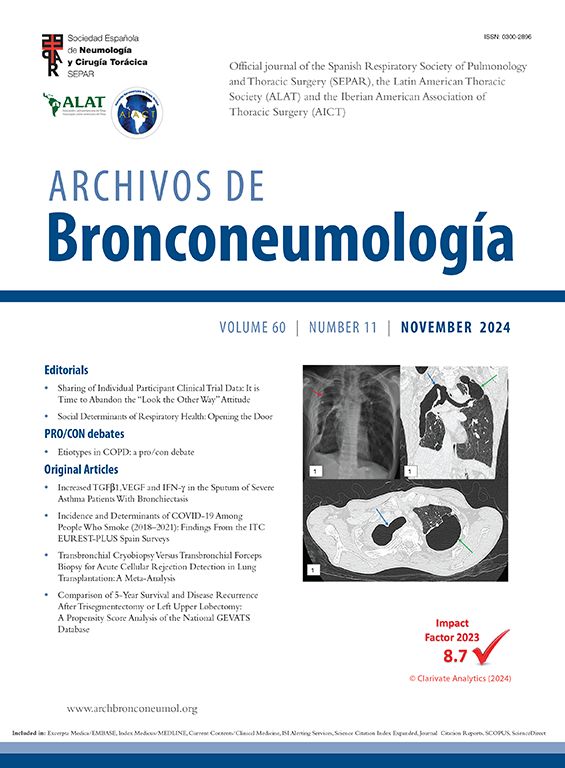In the letter published by Alobid et al.,1 reference is made to the recently published consensus of the REMAS group.2 We appreciate the interest shown and the shared vision of the need to include the evaluation of the “united airway” in the concept of remission, in the case of presenting sinonasal pathology in addition to asthma. We consider that this represents an advance in the vision of the concept of remission in relation to those previously published. Another advance included in the REMAS group's concept of remission is the need for longer-term maintenance of remission (3 years).
The REMAS consensus was the result of the collaboration between the Autonomous Asthma Forum which includes asthma experts from the Autonomous Societies of Pneumology and SEPAR, and the working group of the Spanish Asthma Management Guide (GEMA). The multidisciplinary group that developed the recommendations was made up of 26 experts. A total of 120 panelists responded to the DELPHI and, to our knowledge, it is the consensus in which the largest number of experts have participated. After review by the SEPAR document management committee, it was adopted as the official consensus of the society, as was the table summarizing the consensus included in the latest version of the GEMA 5.4.3
The concept of “remission” in asthma has been used for years with different meanings and continues to be the subject of controversy. With the use of monoclonal agents for treatment, this concept has been “revived” and new expert consensuses have been published with different definitions. For this reason it was necessary to have an official definition agreed upon by the greatest number of experts in our country. It is logical to have aspects that are subject to discussion since it is still, like the others, a consensus of experts whose usefulness will have to be validated with routine practice.
In relation to sinonasal pathology, the authors of the letter indicate that a cut-off point other than SNOT-22 should have been considered for remission. It should be pointed out that the value of 30 obtained consensus among the participants and, moreover, is the value assumed for considering an “adequate response” after treatment with biologics by the European Forum for Research and Education in Allergy (EUFOREA), which includes otorhinolaryngologists.4 The authors also comment on the lack of a concise definition of olfactory recovery and of information regarding what is considered normal nasal endoscopy. In the referenced article by Caminati et al.,5 recovery of olfactory function is indicated as a criterion for referral, and is expressed as “possibly evaluated with an objective test”, without stating further.
Another issue raised is the lack of participation in this consensus of otorhinolaryngologists. It should be pointed out that this consensus is a first approximation that needs to be developed and validated in routine practice. In this development, multidisciplinary work and the participation of all the specialists involved in the disease, including otorhinolaryngologists, is fundamental. In this sense, we extend our hand to our colleagues to collaborate in future revisions of the same and in its validation.
Conflict of InterestsThe authors state that they have no conflict of interests.










